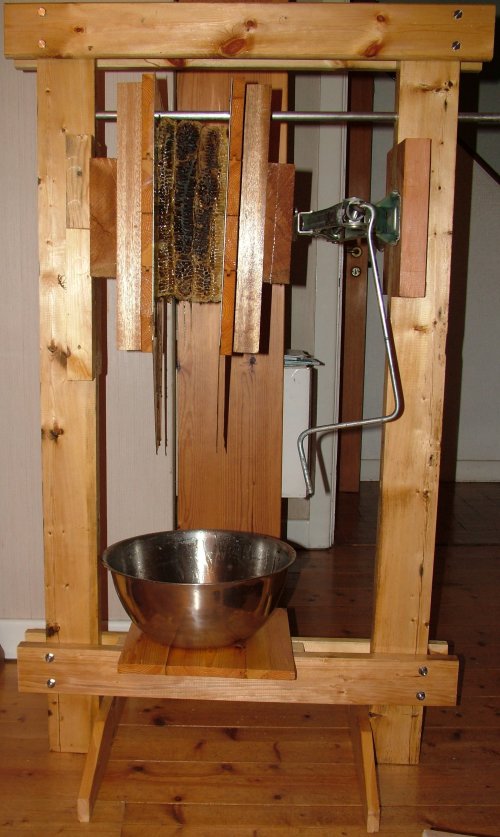
An inexpensive honey press in use
The design of this press is essentially the same as James D. Satterfield's press as illustrated at http://sites.google.com/site/topbarbeehives/beekeeping/honey-press, except that the surfaces contacting honey have been replaced with food grade stainless steel. It cost very little to make as the wood was scrap/recycled, the jack from a scrapped car, the bolts and varnish left over from other jobs. The plates were bought new as offcuts from a stainless steel fabricator for £20.
The two uprights are 4 x 2 inches nominal. The four horizontal beams are 4 x 1 inches nominal. The plates are 12 x 24 inches, tapered at the bottom as better illustrated in the angled view (below). The width is determined by the maximum desired bag size (here 7.5 inches when full), the depth and travel of the jack and the thickness of the bracing timbers. The tongue and groove boards contacting the plates are three quarters of an inch nominal. The thicker bracing timbers are 2 inches thick nominal. The stainless steel rod is 5/8" thick. The unit dismantles into 15 pieces for easy stowage. The plates need to be a lot wider than the bag as the latter spreads under compression.

Above: press loaded with drained honeycomb ready for pressing. The bag is tied to the rod with string.
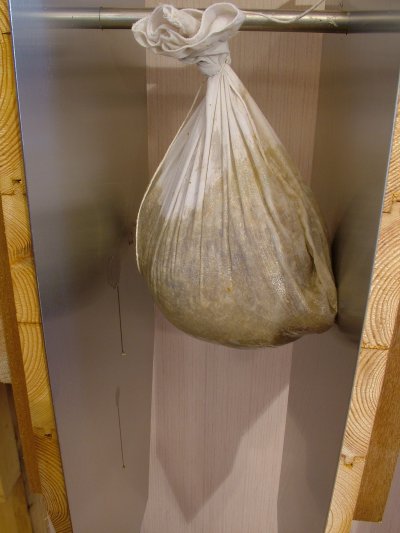
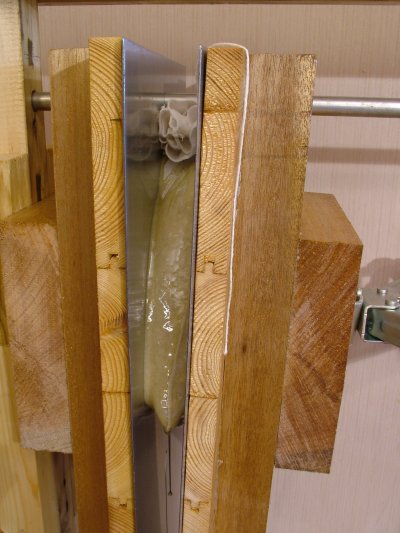
Above left: close-up of bag, rod and plates. Above right: pressing well advanced.
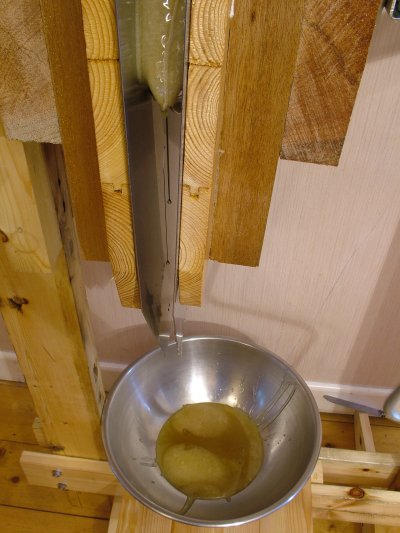
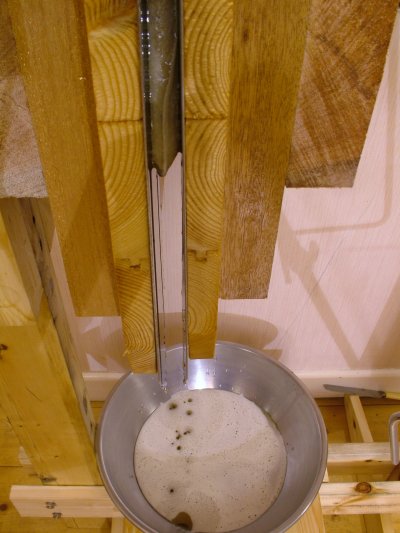
Above left and right: honey collecting in bowl resting on the removable table.
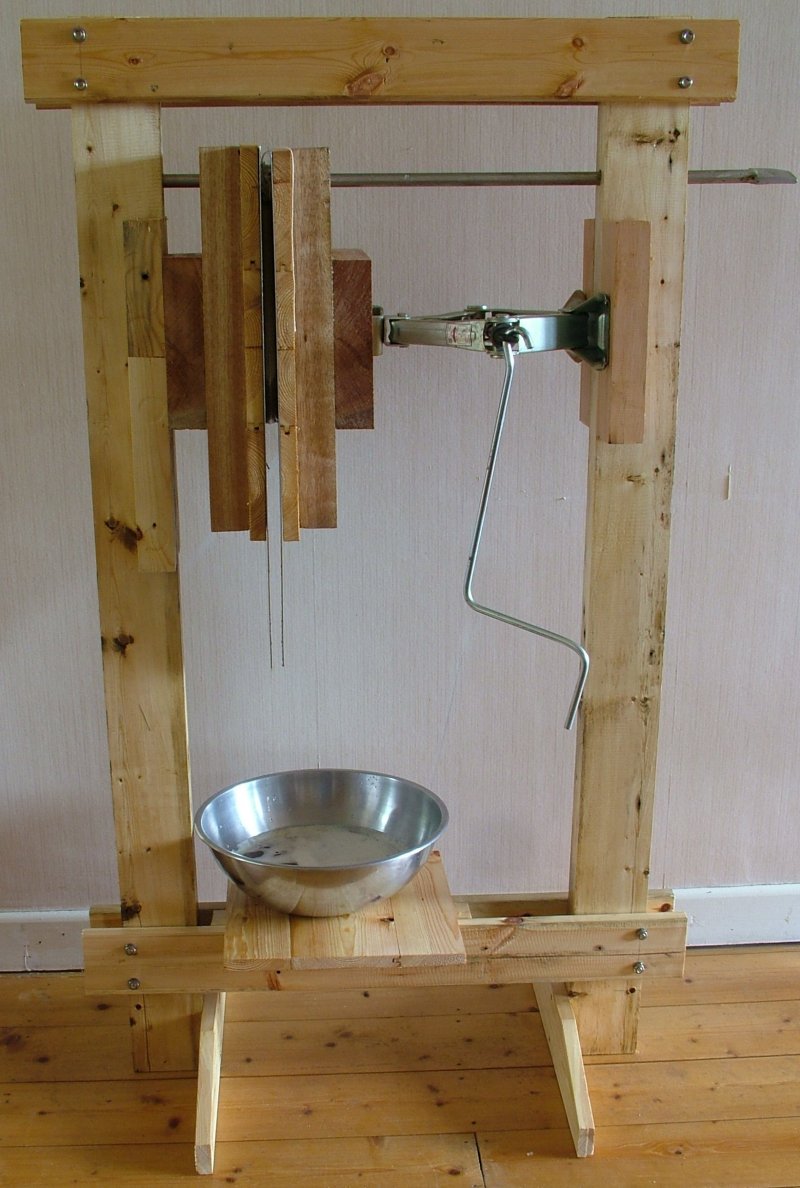
Above: pressing complete
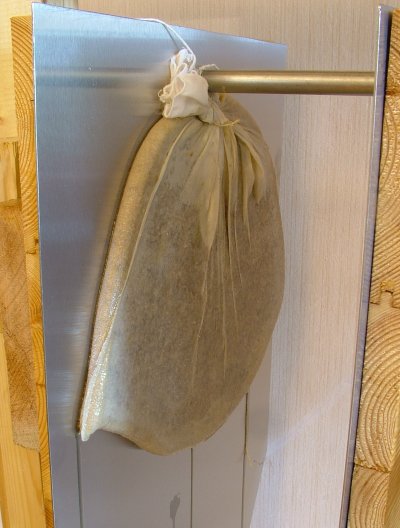
Above: bag of comb after pressing.
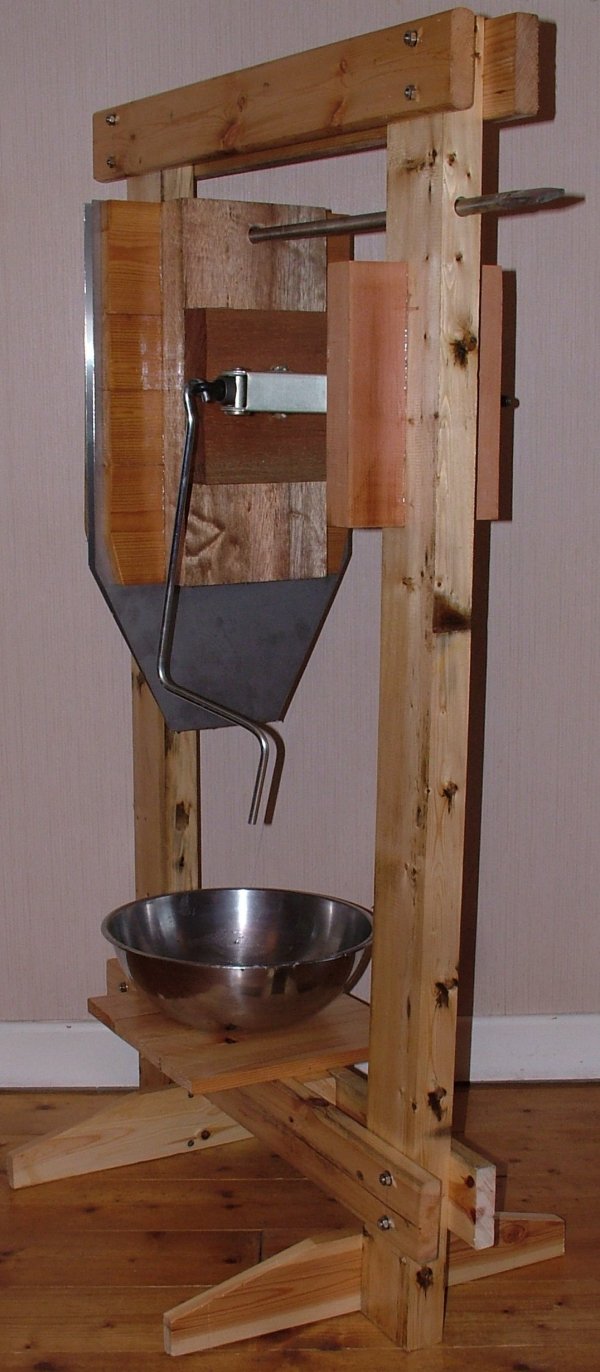
Above: angled view of press.
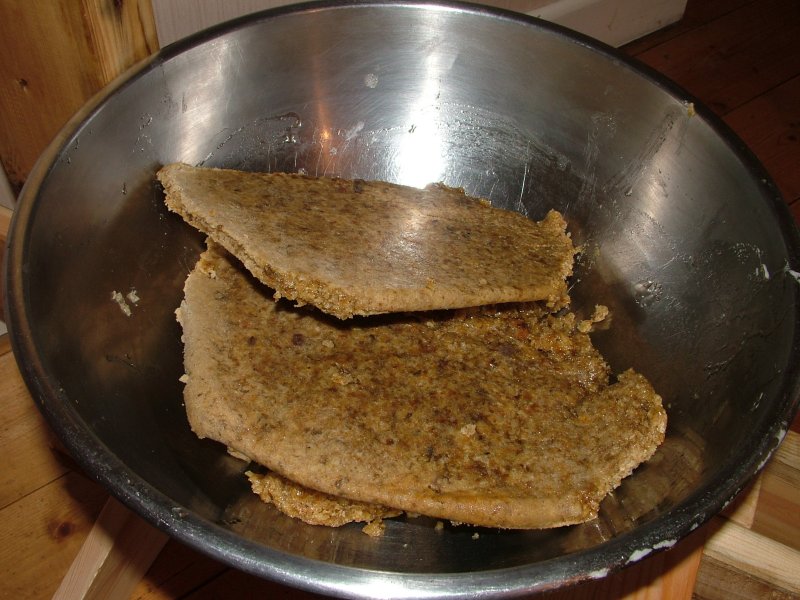
Above: pressed comb removed from bag. This is washed free of residual honey, dried and put in a solar extractor.
When pressing it is important not to go too fast because of the risk of bursting the bag. A turn of the screw can be given from time to time when passing. The tapering at the bottom of the plates was supposed to help guide the honey into the receiver. It proved not to be fully effective. The press is easy to clean. Just rinse the plates under a tap or with a jet from a hose pipe and wipe off any honey that got onto the rod.
More recently I have found that it is more convenient to press whole combs without the use of a bag. Combs of the same size are stacked together, and loaded into the press with the press tilted through 90 degrees so that the plates are horizontal. Gentle pressure is applied to hold the combs in place while the press is righted. Further pressure is then applied, gradually ay first so as not to burst the combs. They act as their own strainer and the honey runs out clear relatively free of particles.
